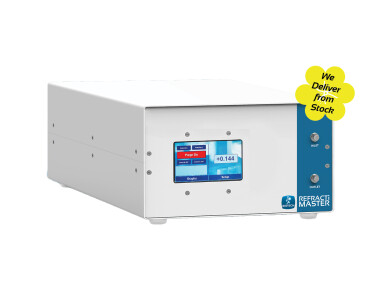Detectors
What is Food Fraud and How Can Chromatography Combat It?
Mar 02 2019
Food producers and retailers commit fraud for a variety of reasons - but ultimately there is one main aim - financial gain. The US Food and Drug Administration describes economically driven food fraud as ‘the fraudulent, intentional substitution or addition of a substance in a food product in order to increase the apparent value of the product or reducing the cost of its production, that is, for economic gain.’ Take a brief look behind the topic and see how chromatography plays a role in safeguarding our food supply lines.
Food fraud - a global issue
There are many different forces behind food fraud. Perhaps there is a shortage of a particular ingredient - as in the recent case of the European horsemeat scandal which was due in part because of a shortage of beef. Or there might be a struggle in getting a key ingredient due to the complex nature of global supply lines which makes the cost of providing scarce or difficult to obtain ingredients more difficult and costlier.
The European Union considers food fraud to be a serious issue and has recently funded a Food Integrity project with the aim of:
‘Providing assurance to consumers and other stakeholders about the safety, authenticity and quality of European food (integrity) is of prime importance in adding value to the European Agri-food economy. The integrity of European foods is under constant threat from fraudulently labelled imitations that try to exploit that added value.’
Types of fraud
Georgiou and Danezis have suggested that there are two main food fraud types.
- Selling food that is unfit and/or harmful by:
- Recycling animal by-products into the food chain
- Not stating a correct origin on food packaging
- Selling food past its ‘use by’ date
- Deliberately misdescribing food:
- Replacing a high value product with a cheaper option
- Making false or misleading statements about the origin of food ingredients (geographic, plant type or animal origin).
Can chromatography help?
As might be expected, as one of the most powerful analytical techniques, chromatography has a huge role to play in keeping safety and consumer confidence high in relation to food fraud. One of the reasons chromatography is so powerful is due to the ability to pair the separating powers of chromatography with different detectors - an attribute discussed in the article, Integration of MS and UV Data for Peak Tracking in HPLC Method Development.
Chromatography has been used to many different aspects of food adulteration analysis. From helping to provide fingerprints of authentic foodstuffs, analysing adulterated ingredients and providing traceability to food ingredients - the power of chromatography can help to keep us safe in the knowledge that our food contains what it states on the label and is safe to eat.
Bon appetite.
Events
May 11 2025 Vienna, Austria
May 18 2025 Tempe. AZ, USA
May 21 2025 Birmingham, UK
Jun 01 2025 Baltimore, MD, USA
Jun 15 2025 Bruges, Belgium














